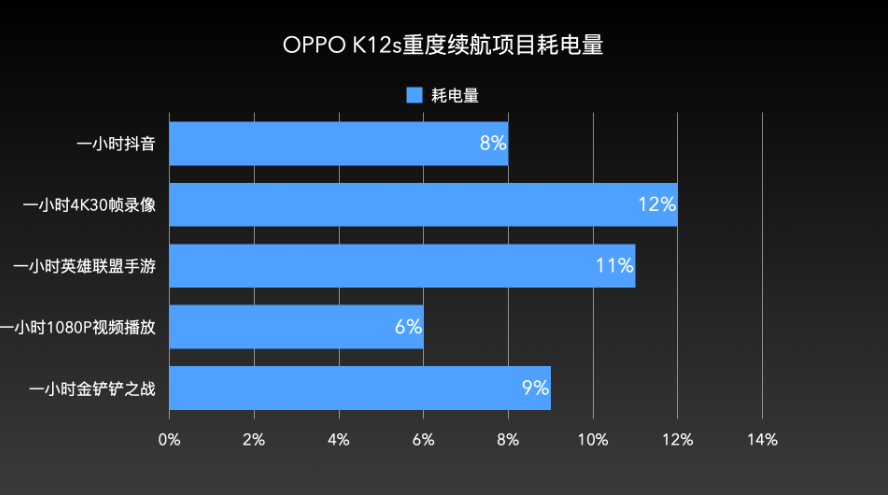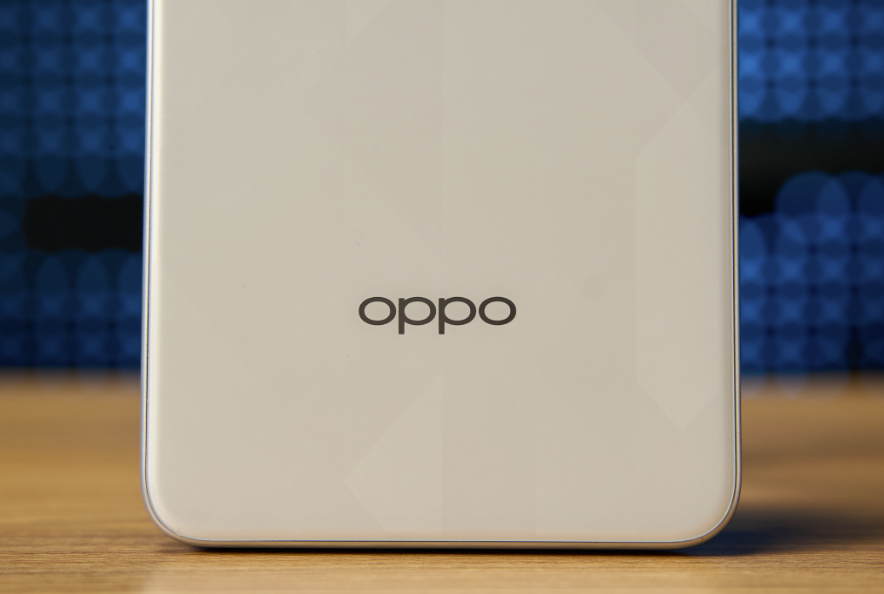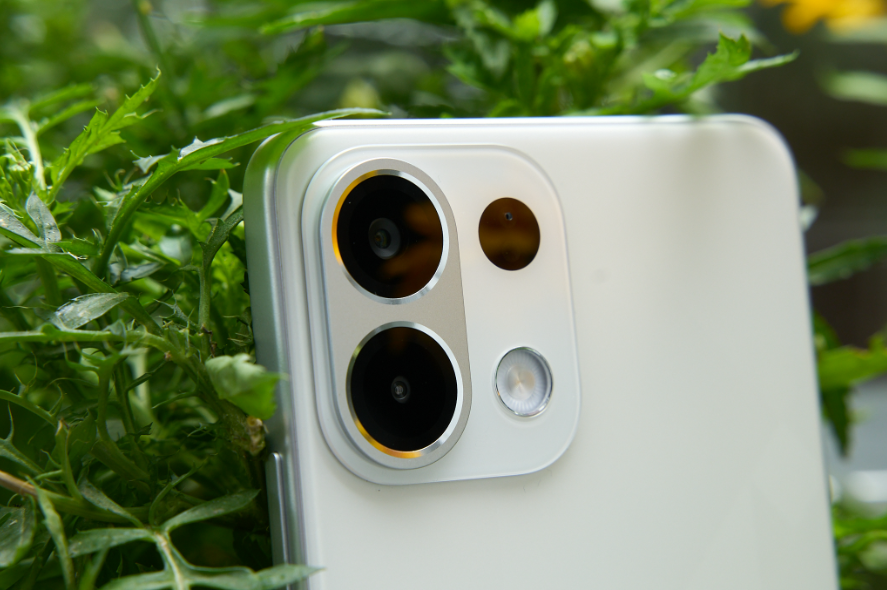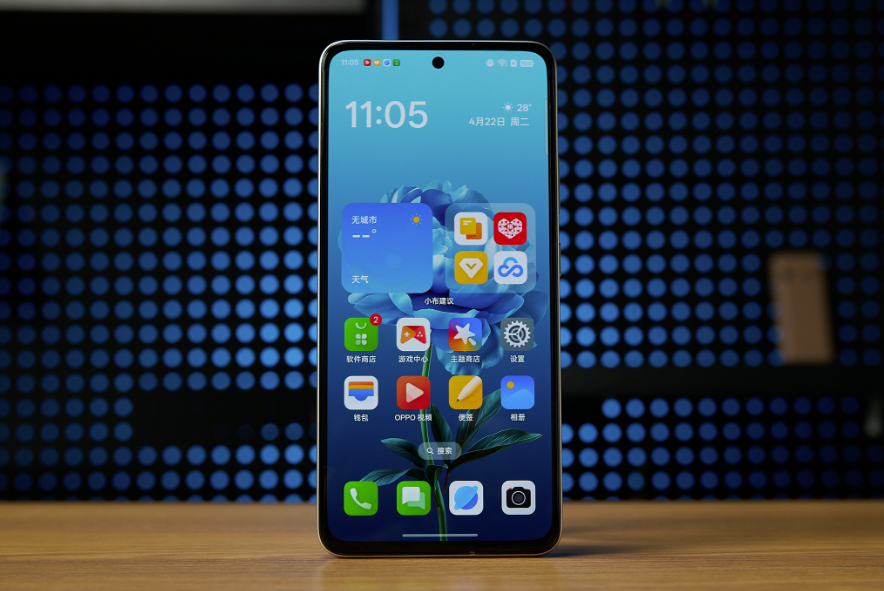Introducing the OPPO K12s: The Scariest Thousand-Yuan Phone on the Market!
![]() 04/23 2025
04/23 2025
![]() 459
459
OPPO's K series has always stood out with its clear selling points and unwavering sincerity, especially since the introduction of the K12 last year. The series has become synonymous with "durability," offering features like large batteries, fast charging, excellent drop resistance, decent screens, and AI functionality. In a word, it's "reliable".
When it comes to pricing, the OPPO K12s is exceptionally well-positioned:
8GB+128GB: 1099 yuan (934.15 yuan after subsidies)
8GB+256GB: 1299 yuan (1104.15 yuan after subsidies)
12GB+256GB: 1499 yuan (1274.15 yuan after subsidies)
12GB+512GB: 1799 yuan (1529.15 yuan after subsidies)
Leitech was fortunate enough to get its hands on the latest member of the K series, the K12s, in advance. Here's our comprehensive review.
Battery Life: Endurance at Its Best
Since the end of last year, domestic mobile phone batteries have significantly increased in capacity, particularly in the 2000-4000 yuan price range. It seems that anything below 6500mAh is now considered insufficient. The OPPO K12s is no exception, boasting an ultra-large 7000mAh battery. However, OPPO didn't stop there; they also equipped it with their proprietary SUPERVOOC S power management chip.
This chip leverages AI learning to understand users' charging habits, minimizing the time the battery spends in an "over-saturated" state due to improper operation. Coupled with OPPO's exclusive bionic repair electrolyte technology, the battery retains 80% of its capacity after five years of use. While replacing an Android phone's battery isn't expensive, this feature still saves users money in the long run.
In terms of charging speed, the OPPO K12s comes with a 100W charger, offering impressive results:

(Image source: Leitech graphics)
The OPPO K12s charges 65% in about half an hour (roughly equivalent to 4550mAh) and reaches a full charge in 58 minutes. For a phone with a 7000mAh battery and a nominal peak charging power of 100W, this is exceptionally fast.
Considering many users charge their phones overnight, OPPO K12s thoughtfully includes a prolonged charging protection feature. The system stops charging at 80% and then completes the charge at specific times, such as just before dawn, extending the battery's lifespan.
However, one disappointment is that the OPPO K12s still only supports OPPO's proprietary charging protocol. High-power PD and PPS are not supported, unlike competitors in the same price range who have optimized their charging protocol compatibility for faster speeds with third-party chargers.
After fully charging, we conducted a five-hour heavy battery life test on the OPPO K12s to see if it could meet everyone's expectations under full load.

(Image source: Leitech graphics)
The results exceeded our expectations. The 7000mAh battery, combined with the energy-efficient fourth-generation Snapdragon 6 processor, delivered impressive endurance. During our tests, we found that the phone's power-saving effect was particularly noticeable during web browsing and online video playback. For example, playing online videos at 50% brightness and 30% volume for four hours only depleted the battery by 15%.
Extrapolating from these results, the OPPO K12s can play videos for nearly 30 hours on a single charge. This also showcases the optimization of its ColorOS 15 system for power-saving strategies. Based on our daily usage habits, the OPPO K12s can easily last two days on a single charge.
Durability Overlooks Aesthetics
Moving beyond battery life, let's take a look at the OPPO K12s' design. If you're familiar with last year's OPPO K12, you'll notice that the K12s adopts a completely different approach. While the OPPO K12 had a hint of Samsung, the K12s is heavily influenced by Apple (some colleagues even compare it to a competitor's 11 Lite version).

(Image source: Leitech photography)
Holding the actual device, you can feel its heft at 8.45mm thickness and 208g weight. While the weight isn't a complaint, the distribution of the K12s' center of gravity is somewhat unreasonable, coupled with a not-so-smooth transition of the frame, giving it a grip score of around 7 out of 10 from us – not bad but not great either.
As a low-priced product, the OPPO K12s opts for a combination of plastic frame and plastic back cover, differing from flagship phones' glass and metal materials. However, through excellent surface treatment, OPPO makes the back cover difficult to distinguish between plastic and metal with the naked eye.
Plastic has its advantages; it's durable and less fragile than glass. The frame and back cover can absorb more impact during drops, making it a more resilient choice for users in this price range. Even if it breaks, repairs won't be as costly.
The OPPO K12s comes in three colors: Prism Black, Rose Purple, and Starlight White. Leitech received the Starlight White version, which appears closer to off-white under good lighting. Upon close inspection, you can see that the back cover is adorned with multiple polygonal patterns, giving the phone a sleek and modern look. OPPO clearly understands its target audience when it comes to color choices.

(Image source: Leitech photography)
In the camera Deco area, OPPO generously uses a stainless steel camera protection ring. While not very large and featuring a low-key color scheme, it provides good protection for the lens when the phone is placed flat. However, this slightly concave design inevitably increases dust accumulation.

(Image source: Leitech photography)
The OPPO K12s features a 6.7-inch OLED straight screen. Compared to mainstream flexible screens, the main drawback of straight screens is their inability to bend or fold, resulting in a wider lower bezel. This design choice is likely based on cost considerations, as the OPPO K12s' surrounding configuration is still reasonable.

(Image source: Leitech photography)
The screen parameters include 1080p resolution, a 120Hz refresh rate, up to 600 nits of global brightness, and 1200 nits of global peak brightness. While these parameters might seem mediocre, the screen boasts a feature that users care deeply about: eye protection.
Many current phones use either DC-like dimming or high-frequency PWM dimming for eye protection. The former increases screen power consumption with average results, while the latter still has flicker issues at low brightness and may affect color performance. OPPO K12s' three-pulse DC-like dimming eye protection technology effectively solves these drawbacks, ensuring color effect and uniformity while optimizing flicker at low brightness. It's one of the most suitable eye protection technologies for current market demands.
Although the addition of eye protection technology gives the K12s' screen a selling point, in this "specs-sensitive" era, most users will still prioritize products with higher resolution or screen-to-body ratios.
The Core of the K Series
However, what the OPPO K12s is most worth talking about isn't its design or screen but its durability. For products in this category, high aesthetics are a bonus; durability is the foundation for success.
After reviewing relevant information, we found that the K12s is the fourth member of the K12 series, with each product having a distinct positioning. For example, the K12 focuses on drop resistance and durability, the K12 Plus adds a large battery, and the K12x brings the price down to below 900 yuan. But they all share one common trait: durability.
The first factor determining system stability is the processor. The OPPO K12s is equipped with Qualcomm's newly released fourth-generation Snapdragon 6 processor, using TSMC's 4nm process. This is a significant leap in energy efficiency compared to the previous generation Snapdragon 6 processor.
In terms of chip architecture, the Snapdragon 6 Gen 4 has also undergone a substantial upgrade, switching from the ARM v8 architecture to the v9 architecture. It includes 1 Cortex-A720 (2.3GHz) ultra-core, 3 Cortex-A720 (2.2GHz) large cores, and 4 Cortex-A520 (1.8GHz) small cores. The benefits of these process and architecture upgrades are improved performance while reducing power consumption. Qualcomm officially states that the Snapdragon 6 Gen 4 offers an 11% CPU performance boost, a 29% GPU performance boost, and a 12% power reduction.
We tested its theoretical performance and found it scored 800,000 points in the AnTuTu benchmark test, which is modest compared to today's flagship phones that start at 2 million points.

(Image source: Leitech photography)
As a mid-range processor that doesn't prioritize performance, we didn't expect it to excel in demanding games like "Genshin Impact," "Absolver Zero," or "Honkai: Star Rail." Therefore, we tested it on less demanding games like "League of Legends: Wild Rift" and "Honor of Kings."
During the one-hour gaming experience, we found that the OPPO K12s' performance optimization for these mobile games was quite good. "League of Legends: Wild Rift" maintained stable frame rate fluctuations in the Extreme 120fps mode without overheating. However, the game does not currently provide a high frame rate option for the K12s, so we hope for an adaptation soon.
Heat generation during gaming was negligible. Coupled with its ultra-long battery life, we estimate it can continuously play "League of Legends: Wild Rift" for 12 hours. But if you play for that long, you'll likely be the one to shut it down first.
Overall, the OPPO K12s' performance isn't outstanding, but it clearly positions itself as an ultra-long battery life phone for daily use. However, it faces stiff competition in this category. Fortunately, the OPPO K12s uses the simplest and most effective "price war" strategy to stand out.
Conclusion: A Thousand-Yuan Durable Phone with a Clear Target Audience
Advantages:
1. Extremely long battery life, even terrifying;
2. Decent overall build quality;
3. Smooth, stable, and durable performance, though not powerful.
Disadvantages:
1. The "chin" is too large, affecting aesthetics;
2. Does not support high-power third-party charging protocols.
Before the price was announced, we thought the OPPO K12s was a mediocre product with no standout features but also few flaws. In the 2000-yuan price range, it had many competitors, and we couldn't guarantee it would stand out.
However, a price of less than 1000 yuan after government subsidies completely changed our mind. If the OPPO K12s sold for 1300 yuan, it would be a mediocre product. But at less than 1000 yuan, it's undoubtedly a cost-effective wonder in its price range.
We must clarify that cost-effective models aren't just about extreme performance or superior photography. In this price range, there are still a considerable number of users who aren't as passionate about gaming and imaging. They hope to buy a more balanced product at this price, including but not limited to excellent craftsmanship, adequate performance, distinctive photography, and most importantly, smooth performance over extended use.
So, do you think it's a good phone for less than 1000 yuan?






